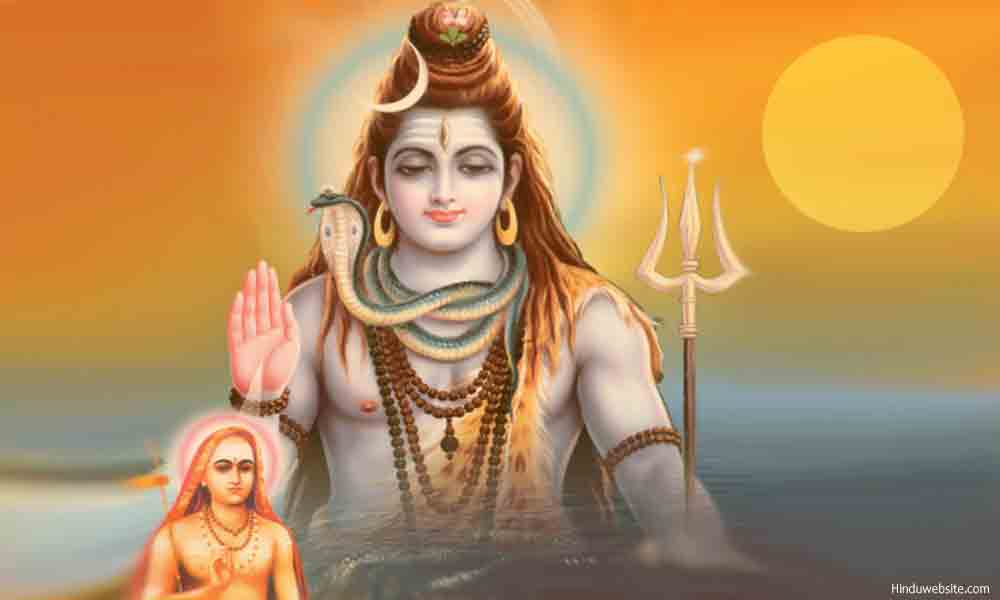
Shaivism Literature

Shiva Teaching Parvathi
Our knowledge of Saivism is derived basically from two literary sources: Vedic literature and Agama literature. Apart from these, we have scholarly works, inscriptions, archeological finds, ancient temples, paintings and sculpture. References to Lord Shiva are also available in the literature of Jainism, Buddhism, Vaishnavism and Shaktism.
The earliest Saivite texts were probably composed in Tamil as evident from an ancient Tamil text dedicated to the worship of Kartikeya. A significant portion of the hidden teachings of Shaivism is confined to the teacher traditions of esoteric Saiva sects and not publicly available.
Vedic literature
Vedic literature refers to the Samhitas, the Upanishads, Puranas, and the epics. The Samhita portion of the Vedas contain many references to Lord Shiva. The references increase in number and significance as one progresses from the ancient part of the Vedas to the subsequent compositions, denoting his increasing popularity and significance in Vedic religion.
There are also many Upanishads, which recognize Shiva as the supreme Brahman and lay special emphasis upon the practices and beliefs of Saivism. Shiva also figures prominently in both the epics. In the epic Ramayana, Shiva is worshipped not only by his most famous devotee, Ravana, but also by Lord Rama himself.
Of the Puranas, some are distinctly Saivite, some are Vaishnavite and the rest contain references to both. Important major Saiva Puranas are Shiva, Linga, Skanda, Agni and Vayu Puranas. Apart from these there are some Devi Puranas, which contain references to Lord Shiva. The Puranas are very extensive works containing many stories and stories within stories, presenting many fundamental philosophical concepts in narrative form, apart from references to the lineages of ancient kings and the conflicts between good and evil.
The Shiva Purana, for example, contains over 22000 verses divided into six Samhitas and 457 chapters and deals with important beliefs and practices of Saivism. The Saiva Puranas were originally composed in Sanskrit around sixth Century C.E, during the Gupta and Post Gupta periods.
Agamas
The Agamas are the most authoritative scriptures of Saivism. They are tantric texts pertaining to various tantric traditions, each recognizing its own set of Agamas. One such tradition known as Agamanta Saivism recognizes 28 Agamas. Orthodox Saivas do not acknowledge the Vedas as supreme. They acknowledge the authority of the Agamas and refer to the Vedas as Nigama. Historically, the Vedas are much more ancient than the Vedas.
The Agamas deal mostly with the philosophical and ritual aspects of Saivism, explaining the meaning, significance and symbolism of the various symbols, rituals, deities, temples and methods of worship used in the tantric tradition, most of which found their way into popular Hinduism of today and are practiced in various Hindu temples. The subject matter is introduced to the readers in the form of an intimate conversation between Shiva as the teacher and Parvathi as the disciple or the listener.
Scholarly works
Apart from these there are many other works such as the Siva Sutras of Vasugupta, Spanda Karika of Bhatta Kallata, Pratyabhijñā of Utpaladeva, Tantraloka or Abhinavagupta, Tirumrai of Nambi Andar Nambi, Tirmandiram of Tirumular, Tevaram of Appar, Tiruvacakam of Manickkavackar, Siva-Jnana-Bodham of Meykandar, and various other scholars belonging to different sects of Saivism. Saivism also has a rich tradition of devotional and poetic literature, starting from the early Christian era.
Suggestions for Further Reading
- Aspects of Lord Shiva
- Saivism or Shaivism - Basic Concepts
- Shaivism Literature
- Mantra and Yoga
- Nataraja, The Lord of the Cosmic Dance
- What Shankara Means?
- Shaivism Sects
- Siva and Bhavani
- Devotional Prayers to Lord Shiva
- Significance of Lord Shiva
- Shaivism Links, Websites and Resources
- Famous Saints of Saivism
- The Worship of Lord Shiva
- History of Shaivism, Lord Shiva in Vedic Literature and Recorded History
- Methods of Worship in Shaivism
- Hindu Gods - Lord Ganesha
- Gods and Goddesses of Hinduism
- About Goddess Parvathi or Shakti
- Quotes on Religious Tolerance in Hinduism
- Sects and Sectarian Movements in Hinduism
- Hinduism - The Role of Shakti in Creation
- Hindu God Lord Shiva (Siva) - the Destroyer
- A Critical Study of the Chronology of Siddhas
- Hindu God Murugan, Kumaraswami, Skanda or Ayyappa
- Symbolic Significance of The Hindu Trinity, Brahma, Vishnu And Siva
- Essays On Dharma
- Esoteric Mystic Hinduism
- Introduction to Hinduism
- Hindu Way of Life
- Essays On Karma
- Hindu Rites and Rituals
- The Origin of The Sanskrit Language
- Symbolism in Hinduism
- Essays on The Upanishads
- Concepts of Hinduism
- Essays on Atman
- Hindu Festivals
- Spiritual Practice
- Right Living
- Yoga of Sorrow
- Happiness
- Mental Health
- Concepts of Buddhism
- General Essays